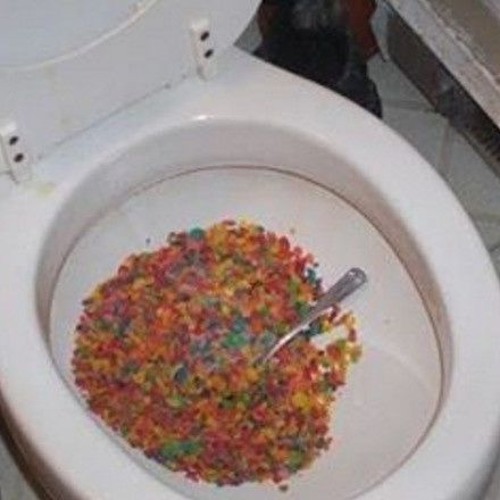Is it Advisable to Flush Food Down the Toilet?
Is it Advisable to Flush Food Down the Toilet?
Blog Article
We have stumbled upon this great article on Flushing Food Down the Toilet? directly below on the net and decided it made good sense to quickly share it with you on my blog.

Introduction
Many individuals are commonly confronted with the problem of what to do with food waste, especially when it comes to leftovers or scraps. One common inquiry that occurs is whether it's all right to purge food down the toilet. In this short article, we'll explore the reasons that individuals could think about purging food, the effects of doing so, and alternative methods for proper disposal.
Reasons why people might take into consideration purging food
Absence of understanding
Some individuals may not recognize the possible harm triggered by purging food down the toilet. They may erroneously think that it's a safe technique.
Benefit
Flushing food down the bathroom might seem like a quick and easy option to getting rid of undesirable scraps, especially when there's no close-by trash can readily available.
Laziness
In some cases, people may just select to flush food out of sheer negligence, without taking into consideration the effects of their activities.
Effects of flushing food down the commode
Ecological effect
Food waste that ends up in waterways can contribute to contamination and damage water ecosystems. Furthermore, the water used to purge food can strain water sources.
Pipes concerns
Purging food can cause blocked pipelines and drains, creating costly pipes repair work and aggravations.
Sorts of food that need to not be flushed
Fibrous foods
Foods with coarse appearances such as celery or corn husks can get tangled in pipelines and create obstructions.
Starchy foods
Starchy foods like pasta and rice can absorb water and swell, resulting in obstructions in pipelines.
Oils and fats
Greasy foods like bacon or food preparation oils ought to never be flushed down the bathroom as they can solidify and trigger obstructions.
Appropriate disposal techniques for food waste
Utilizing a garbage disposal
For homes geared up with garbage disposals, food scraps can be ground up and purged with the plumbing system. However, not all foods are suitable for disposal in this fashion.
Recycling
Specific food packaging materials can be reused, minimizing waste and reducing ecological effect.
Composting
Composting is an environment-friendly means to throw away food waste. Organic materials can be composted and made use of to enrich soil for horticulture.
The relevance of correct waste administration
Decreasing environmental harm
Appropriate waste monitoring practices, such as composting and recycling, assistance decrease air pollution and maintain natural deposits for future generations.
Securing plumbing systems
By preventing the method of flushing food down the commode, house owners can protect against costly plumbing repair work and preserve the honesty of their pipes systems.
Verdict
Finally, while it might be alluring to purge food down the bathroom for comfort, it is necessary to recognize the possible repercussions of this action. By adopting proper waste monitoring techniques and taking care of food waste responsibly, people can add to healthier plumbing systems and a cleaner setting for all.
FLUSH FOOD DOWN THE TOILET?
FLUSHING FOOD CAN CAUSE BLOCKED DRAINS IN YOUR HOME
All of the plumbing fixtures in your home are connected to the same sewer pipe outside of your home. This outdoor sewer pipe is responsible for transporting all the wastewater from your home to the Council sewer mains. Even small pieces of food that go down the kitchen sink can cause problems for your sewer. It should therefore be obvious that flushing larger bits of food, such as meat, risks a clog in either the toilet itself or the sewer pipes. Flushing greasy food is even more problematic because oil coagulates when it cools, coating the interior lining of your pipes.
THE TOILET IS NOT A BIN
Food isn’t the only thing that people shouldn’t be flushing down the toilet. People use the toilet to dispose of all kinds of things such as tampons, makeup wipes, dental floss, kitty litter and even underwear. Water goes to great lengths to educate residents about the high costs and stress placed on wastewater treatment systems simply from people flushing the wrong stuff down the toilet. It costs taxpayers millions of dollars each year, and homeowners thousands in blocked drain repairs.
FLUSHING FOOD IS A WASTE OF WATER
Flushing food is a waste of our most precious resource - water. In June this year Level 1 water restrictions were introduced to protect water supply from drought conditions. Much of New South Wales continues to be affected by prolonged drought with recent figures revealing up to 97 per cent of the state remains in drought. Depending on whether you have a single or dual flush toilet, every single flush uses between five and 11 litres of water. In the current climate this is a huge amount of water to be wasting on flushing food that should be placed in the bin (or better yet, the compost).
https://www.jabplumbingsolutions.com.au/blog/can-you-flush-food-down-the-toilet

I found that content about when doing a search on the search engines. Appreciated our blog? Please quickly share it. Help other people discover it. Thank you for your time invested reading it.
Additional Resources Report this page